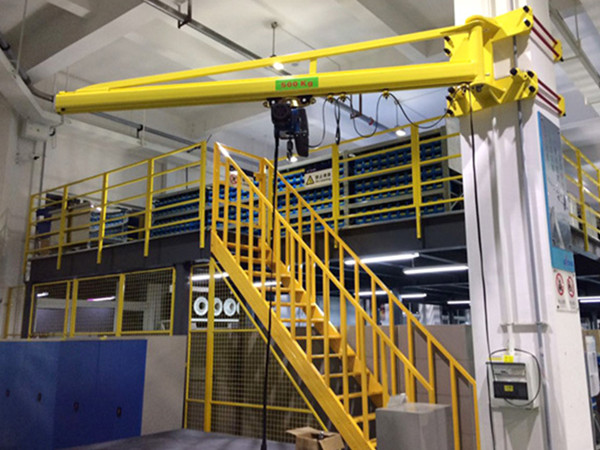0086-18695891045
Time : 2023-02-03
As a relatively common crane category, jib crane mainly include three forms: fixed column cantilever crane, walking cantilever crane, and wall-mounted crane. This article describes different types of jib crane.
Column type cantilever crane refers to the cantilever crane with the cantilever device on the column, the cantilever structure rotates on the column, and the walking lifting device moves back and forth to lift heavy objects.
Wall-mounted jib crane refers to the jib crane whose main body is installed on the wall and rotates through the cantilever to lift heavy objects.
The mobile jib crane means that the overall structure of the jib crane can be moved. It is divided into two types: hand-push and electric.
The electric rotating jib crane means that the rotation of the cantilever is completed by the electric motor and the reducer. The advantages are labor saving and convenient operation, but at the same time the cost is high. It is generally used for jib cranes of medium and large tonnages of 1t and above.
Manually rotating the jib crane means that the jib crane is rotated by pulling or pushing by hand, etc., by virtue of the external force of the human body. The cost is low, the structure is simple, and the overall price is low. It is generally used for jib cranes of 1t and below.

Supported jib crane means that the bottom of the cantilever is supported by a support block, and the arm is above the jib crane. The characteristic of this structure is that the effective height from the arm to the ground is high, so the lifting height is relatively high, and it is suitable for short workshops or jib crane that require a higher lifting height.
The cable-stayed jib crane refers to that the cantilever is fixed with a square tube or channel steel to strengthen the force of the jib crane. This kind of structure is characterized by simple structure and low processing cost. The disadvantage is that the cantilever is in the middle and upper part of the crane, which is suitable for taller workshops or workshops that do not require high lifting height.
The combined type generally uses the KBK track to make the cantilever part, and the upper part of the arm is welded with a square tube, which is constructed as a cable-stayed structure with a light structure.
Each of the above structures has its own advantages and disadvantages, and it is necessary to select the type of cantilever according to the actual site conditions and working conditions.

The beam of the jib crane generally adopts I-beam or KBK rail, and the large-tonnage jib crane adopts box-shaped beam (box beam).
The selection of the cantilever crossbeam is generally determined according to the trolley operation mode required by the customer. Manual trolleys generally use KBK rails, electric trolleys generally use I-beam structures, and those with large tonnage must use I-beam (box beam) structures.
Different cantilever beams have different power distribution methods. Generally, I-beam power distribution uses C-rail + flat cable + trolley for power distribution. The power distribution of KBK beams is relatively simple and the cost is relatively low. The power distribution method of KBK track cable slider + flat cable is selected.

| Customization: | YES | Brand: | Flagcrane |
| Model: | Jib Crane | Color : | Customized |
| Hoist : | Pendant, Remote Control | structure type : | Cantilever Crane |